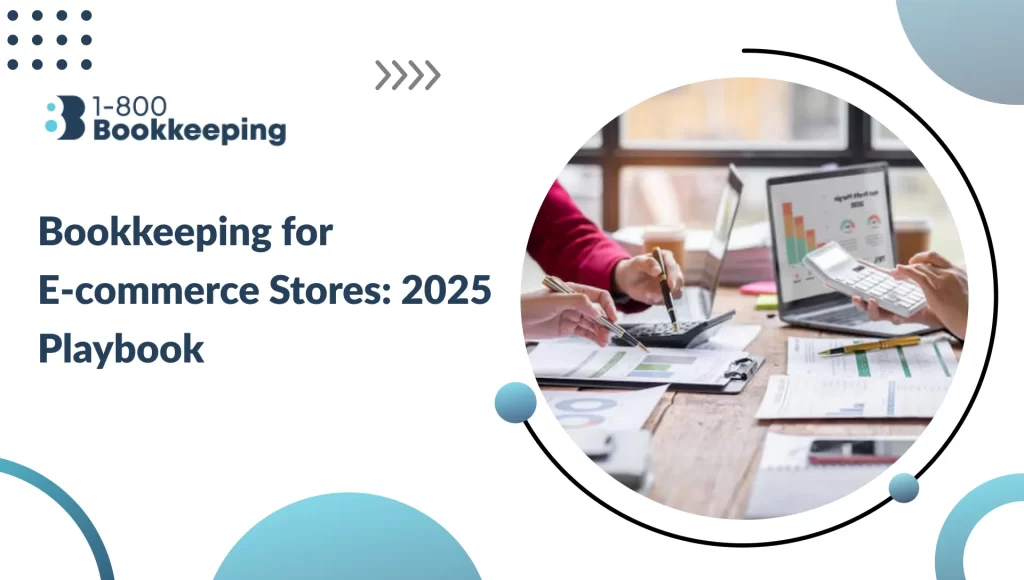Effective financial forecasting and planning are critical components that can significantly improve a company’s chance of success. These not only provide a roadmap for where you’re heading but also offer a strategy for how to get there. Whether you’re a startup just finding your feet or an established small business aiming to grow, understanding the nuances of financial forecasting and planning can be a game-changer.
This article, designed for SMEs, underscores the importance of financial forecasting and planning, offering a comprehensive guide to mastering these essential business tools. It aims to inform and empower business owners in financial management by incorporating relevant keywords and tailoring the content for a general audience.
What is Financial Forecasting?
Financial forecasting predicts a company’s future financial performance based on historical data, current market trends, and management’s strategic vision. It involves estimating future revenues, expenses, and other economic aspects to provide a future snapshot.
Significance of Financial Forecasting
Forecasting serves as the linchpin for a well-rounded business strategy. It helps companies:
- Set realistic goals: Businesses can set achievable targets by predicting future financial conditions.
- Manage cash flow: Financial forecasts help manage incoming and outgoing cash, ensuring liquidity.
- Prepare for uncertainty: Companies can foresee potential downturns and prepare contingency plans.
- Boost investor confidence: Accurate forecasts can attract investors by demonstrating professionalism and foresight.
1800 Bookkeeping: Streamline Records, Fuel Growth
Financial forecasting and planning are your roadmap to success, but gathering the data can be a time-consuming detour. 1800Bookkeeping is your partner in streamlining recordkeeping. Our tech-powered experts ensure accurate, organized data – the foundation for reliable financial forecasts. Imagine clear insights into cash flow and future revenue!
Contact 1800 Bookkeeping today. We’ll transform recordkeeping from a burden to a springboard for your financial planning and growth.
Understanding Financial Planning
Financial planning comprehensively evaluates an organization’s current and future financial state. It uses currently known variables to predict future cash flows, asset values, and withdrawal plans. It includes budgeting, setting financial objectives, and devising a strategy.
Components of Financial Planning
- Goal Setting: Defining short-term and long-term financial goals.
- Budgeting: Allocating resources efficiently across various expenses.
- Risk Management: Identifying potential financial risks and creating mitigation strategies.
- Investment Planning: Determining where to invest surplus funds for optimal returns.
Differences Between Financial Forecasting and Planning
Financial forecasting and planning are like two sides of the same coin. Forecasting predicts the future using data and trends, like a crystal ball, for your finances. It reveals what your revenue, expenses, and cash flow might be.
Financial planning, however, takes action. It uses the forecast’s insights to set goals, allocate resources, and craft a roadmap to achieve those goals. This includes investment decisions, spending plans, and growth strategies. Forecasting tells you “what” might happen, while planning determines “how” to make the most of it.
Techniques for Effective Forecasting
Quantitative Methods
- Time Series Analysis: Uses historical data to predict future trends.
- Regression Analysis: Examines the relationship between variables to forecast future outcomes.
- Econometric Models: Combines statistical and economic theories to predict future financial performance.
Qualitative Methods
- Market Research: Involves surveys and expert opinions to predict future financial performance.
- Delphi Method: Uses a panel of experts to achieve a consensus forecast.
Choosing the Right Technique
Selecting the appropriate forecasting method depends on factors like the availability of historical data, industry trends, and the business’s specific needs. Combining quantitative and qualitative methods often proves most effective for small to medium businesses.
Crafting a Financial Plan: A Step-by-Step Approach
Step 1: Set Clear Financial Goals
Define what you aim to achieve in the short term (1-2 years) and long term (3-5 years). Goals could include revenue targets, market share objectives, or expansion plans.
Step 2: Assess Current Financial Status
Evaluate your current financial statements to understand your starting point. This involves analyzing balance sheets, income statements, and cash flow statements.
Step 3: Develop Budget Plans
Create budgets for various departments and align them with your financial goals. Ensure that you allocate resources efficiently to maximize returns.
Step 4: Implement Risk Management Strategies
Identify potential financial risks and develop strategies to mitigate them. This could include diversifying your revenue streams or having contingency funds in place.
Step 5: Monitor and Adapt
Financial planning is not a one-time activity. To stay on track, you must continuously monitor your financial performance and adapt your plans as necessary.
Utilizing Forecasts for Business Growth
Identifying Growth Opportunities
Forecasts can reveal new market opportunities you might have missed by analyzing trends in customer data. Imagine discovering a hidden customer segment with untapped potential!
Planning for Challenges
Forecasts also highlight potential challenges, like financial bottlenecks. Knowing these roadblocks in advance allows you to take proactive measures, like securing additional funding or streamlining operations, to ensure a smoother ride.
Making Informed Decisions
With forecast data, businesses can make data-driven decisions about expansion, investments, or cost-cutting. This means less guesswork and more strategic choices that minimize risks and maximize investment returns.
Financial Planning for Sustainability
Long-Term Vision
Getting caught up in the immediate is easy, but financial planning encourages businesses to take a long-term view. By considering future market trends, economic forecasts, and evolving customer needs, companies can make strategic decisions that ensure their continued success for years to come.
Risk Management
The business world is full of unforeseen challenges. A solid financial plan is a shield, helping businesses identify and prepare for potential risks. Whether it’s an economic downturn, a shift in regulations, or a disruption in the supply chain, a proactive plan minimizes the impact and positions the business for a smooth recovery.
Investment Decisions
Financial planning is a roadmap for your resources. It ensures that investments are aligned with your long-term vision. Instead of impulsive spending, businesses can make calculated decisions about capital allocation, ensuring investments contribute to sustainable growth and solidify their position in the market.
By prioritizing long-term sustainability, financial planning empowers businesses to confidently navigate the present and build a secure future for themselves and their stakeholders.
Common Mistakes in Financial Forecasting and How to Avoid Them
Overly Optimistic Projections
Don’t get caught up in overly optimistic projections. Base your forecasts on historical data, market trends, and a healthy dose of realism. Remember, a forecast is an educated guess, not a guaranteed outcome.
Ignoring Market Trends
The market is a dynamic beast. Ignoring trends in customer behavior, competitor strategies, or economic shifts can lead to inaccurate forecasts. Monitor external factors regularly to keep your predictions relevant.
Inadequate Risk Management
Life (and business) is full of unexpected events. Don’t get caught flat-footed by neglecting risk management. Identify potential risks, from supply chain disruptions to economic downturns, and develop contingency plans to mitigate their impact.
Lack of Regular Review
The world doesn’t stand still, and neither should your forecasts. Schedule regular reviews to update your projections based on new data and changing circumstances. This ensures your financial plan remains a dynamic guide, not a dusty relic.
Embracing Technology in Financial Management
Impact of Technology
Technology has revolutionized financial forecasting and planning. Advanced software can analyze vast amounts of data quickly and accurately, providing more reliable forecasts.
Technology empowers software to analyze massive datasets, uncover trends, and predict future performance with superior accuracy. This data-driven approach replaces intuition with insights, allowing you to make informed financial decisions.
Furthermore, technology automates tedious tasks and facilitates scenario planning, freeing time for strategic thinking and collaboration. By embracing these advancements, businesses gain a clearer financial picture and make data-driven decisions to achieve their goals.
When to Seek Professional Financial Advice
Scenarios for Professional Consultation
- Complex Financial Situations: Consulting a professional can clarify your business’s complex financial issues.
- Significant Business Changes: During mergers, acquisitions, or major expansions, professional advice can be invaluable.
- Lack of In-House Expertise: If your team needs more financial expertise, hiring a financial advisor can guide you through complex processes.
Advantages of Professional Input
Professional financial advisors bring experience and specialized knowledge. They can offer tailored advice, helping you navigate financial complexities and make informed decisions.
Conclusion
Financial forecasting and planning are indispensable for steering your small business toward long-term success. By understanding and leveraging these strategies, companies can set realistic goals, manage cash flow efficiently, and navigate the complexities of financial management. Incorporating technology and seeking professional advice when necessary can further enhance the effectiveness of your financial strategies. Whether aiming for growth, sustainability, or risk management, a well-crafted financial plan combined with accurate forecasting can significantly elevate your business’s prospects. Take proactive steps today to master financial forecasting and planning and set your business on the path to enduring success.
Feeling Overwhelmed by Bookkeeping? We Can Help.
Running a business is demanding, and keeping track of your finances can be a never-ending chore. Many business owners need help with the complexities of bookkeeping, which can leave them frustrated and behind.
1800 Bookkeeping offers expert services to streamline your financial processes and empower you to make informed decisions.
Our team of seasoned professionals understands the unique challenges businesses of all sizes face. We can help you:
- Free Up Valuable Time: Offload your bookkeeping tasks to our dedicated professionals.
- Gain Peace of Mind: Ensure your financial records are accurate and up-to-date.
- Make Smarter Decisions: Get actionable insights into your business performance through clear and concise reports.
- Feel Confident: Make informed financial decisions based on reliable data.
Don’t let bookkeeping hold you back from achieving your business goals. Contact 1800 Bookkeeping today for affordable bookkeeping solutions.
FAQs:
1. What is the difference between financial forecasting and financial planning?
The blog post explains that financial forecasting is about predicting the future using data and trends. In contrast, financial planning uses those predictions to set goals, allocate resources, And create a roadmap to achieve those goals. Forecasting is essentially saying “what” might happen while planning figures out “how” to make the most of it.
2. What are some common mistakes in financial forecasting, and how can I avoid them?
The blog post highlights common mistakes, such as over-optimistic projections, ignoring market trends, inadequate risk management, and lack of regular review. To avoid these mistakes, businesses should base forecasts on realistic data, monitor market trends, identify and plan for potential risks, and regularly update their projections based on new information.
3. How can technology help with financial forecasting and planning?
The blog post explains that technology can revolutionize financial forecasting and planning by using advanced software to analyze vast amounts of data. This allows for more reliable forecasts and data-driven decisions, replacing intuition with insights. Technology can also automate tasks and facilitate scenario planning, freeing time for strategic thinking.
4. When should I consider seeking professional financial advice?
The blog post suggests seeking professional help for complex financial situations, during significant business changes (mergers, acquisitions), or if your team lacks in-house financial expertise. Experienced financial advisors can provide tailored advice and help you navigate financial complexities.
5. What are the benefits of financial forecasting and planning?
Financial forecasting and planning can help businesses set realistic goals, manage cash flow efficiently, navigate financial complexities, identify growth opportunities, plan for challenges, make informed decisions, ensure long-term sustainability, and prepare for unforeseen risks. By incorporating these strategies, businesses can significantly improve their chances of achieving long-term success.





